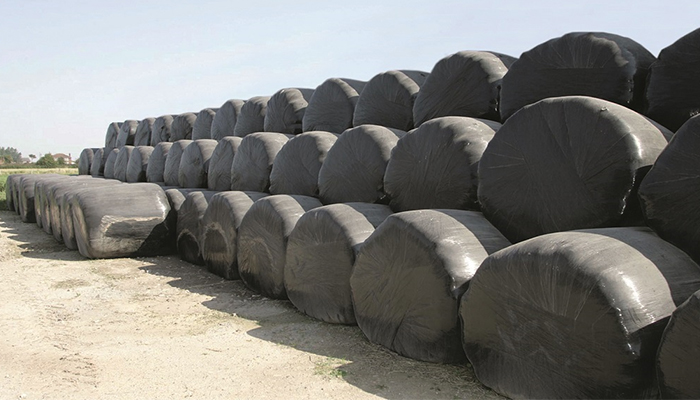23 November 2023
Have you enough fodder for this winter? If in doubt act now

Alan Dillion, Co-ordinator of the Teagasc DairyBeef 500 Campaign, highlights the importance of early planning when it comes to managing fodder stocks this winter.
A recent Teagasc fodder survey showed that up to 25% of farms may be short of fodder. It varies from region to region. Winter started early in some locations due to incessant rainfall and waterlogged fields as the autumn arrived.
While there are a number of farms that have surplus fodder around the country, transporting fodder – especially baled silage – long distances can be extremely costly. Additionally, with quality down significantly in late second cut silage, it could be an expensive exercise moving 60% DMD bales from county to county.
History has often been unkind to us in terms of banking on an early spring following a bad summer. The wet summers and autumns of 2012 and 2017 spring to mind, which were followed by very poor springs and the importation of fodder to alleviate the crisis.
A late spring in 2024 would spell big trouble for farmers, as both fodder cost and concentrate prices have increased significantly since the last big crisis.
Baled silage is already appearing on websites for sale at up to €50 out of the yard, while hay is priced at a similar level. Straw is virtually not available, while concentrates are around €330-370/t depending on spec. What this means is that running out of feed will cost significantly more to finance than in 2013 or 2018.
Farmers need to create a budget and see where they are at in terms of supply. In some cases, a significant amount of fodder has been used and this will need to be factored in. If stock were housed a month to six weeks earlier, as was the case in some heavier soils areas, then farmers could need to budget for a 6-7 month winter.
Weighing up the options
Farmers need to assess is it worth purchasing silage at €50 or more per bale plus meal to feed to categories of stock such as finishing cattle.
If we look briefly at the economics of such an exercise, a 550kg steer eating 6kg of meal plus 25kg of silage will cost nearly €4/day in feed costs. At current beef prices, these cattle will bring back in around €3 a day – give or take.
If this is the scenario, the question needs to be asked would farmers be better off selling some cattle live in the mart. It may alleviate the situation of having to buy expensive silage and meal, and de-risk the business to some degree.
Slurry tanks in some yards are also filling fast due to unsuitable ground conditions for spreading up to mid-October, so any extra stock out of sheds now would lighten the pressure.
On most farms, there are some surplus stock that could be offloaded sooner rather than later. Cull cows scanned not in calf are still meeting a good trade, if conditioned; very light stores needing a third summer at grass could be sold off now, as they would consume significant quantities of silage.
Table 1: Silage quantities required for a 50-cow suckler unit bringing all progeny to finish
| Stock type |
Number of stock (A) |
Winter months (B) |
Tonnes of silage fresh weight per month (C) |
Total (AxBxC) |
|---|---|---|---|---|
| Suckler cows | 50 | 6 | 1.4 | 420 |
| Weanlings | 50 | 5 | 0.7 | 175 |
| Finishing/store cattle | 40 | 5 | 1.3 | 260 |
| Total tonnes | 855 |
Summary
Table 1 outlines the fodder requirements for various categories of stock (excluding meal fed) for a 50-cow suckler unit carrying its progeny to finish.
While the above exercise doesn’t account for the meal input, which varies from farm to farm, it highlights the high volumes of silage required for even a 50 cow to finish unit. If short of fodder, farmers need to be proactive and make a decision as to whether to purchase silage now or sell stock to relive pressure should they need to.
While a dry spring would be very welcome and would solve many problems on farm, it is not worth taking a chance on it. With increased scale on a large number of farms, particularly in the dairy industry, these farms will swallow up a huge quantity of silage locally in a short space of time should a late spring arrive again. This has the potential to leave beef farmers in an even bigger quandary than they may be in now.
Also read: What will the changes to the breeding indexes achieve?
Also read: Controlling IBR – the first step is know your herd’s status
Also read: A guide on winter dosing products
